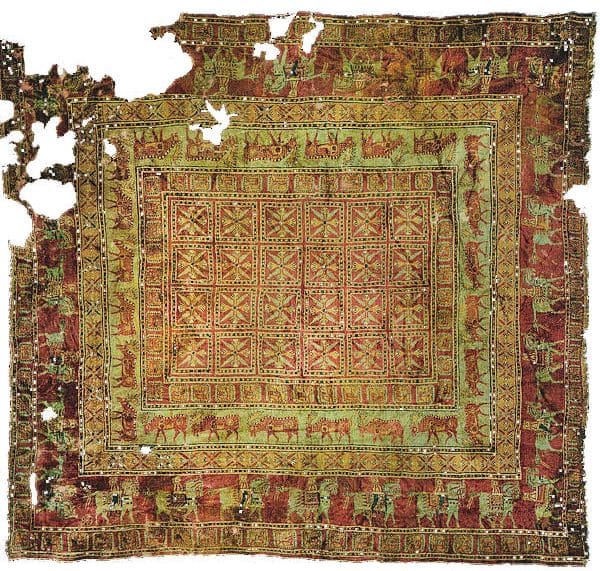“Tribal rugs” are often defined quite broadly, as rugs that were woven by the nomadic or semi-nomadic weavers of such tribes as the Belouch, Turkmen, Qashqai and Turks.

These rugs can also be distinguished by their appearance, as they tend to have quite geometric motifs compared to the more floral and curvilinear motifs used on city rugs.
The early history of tribal rugs
It is thought that the pastoral nomads of Central Asia were the originators of the art and craft of the hand knotted carpet, thanks in part to the sheep from which they could source a constant supply of wool. The initial carpets were probably animal pelts.
The earliest tribal rugs are believed to have been made for private use, meaning they were not created for or influenced by market forces or the specifications of an exporter.

The resulting design and colour combinations could therefore be said to be truly indigenous, albeit also frequently mysterious. While some motifs took their inspiration from plants and flowers, for example, others were highly abstract.
How tribal rugs gained in sophistication
It seems to have been the more western tribes that created, the more complex knotted pile technique. While the Mongols of the east never used the knotted pile weave, for example, neighbours to the west – including the Kirghiz, Kazakh and Turkmen – did.

The Pazyryk Carpet, which originated in Afghanistan and has been described as “the oldest rug in the world”, is less than 3,000 years old. However, its incredible artistry and craft indicate that the knotted pile technique had already been developed for centuries by the time of its creation.

Tribal rugs were long created as part of strong local traditions, and incorporated traditional and sometimes heraldic motifs that had changed little over the centuries.
Weavers adopted the traditional design and colour of their parents who weaved such rugs. At the same time, there was also a tendency among Turkmen for larger tribes to subsume smaller tribes and appropriate the latter’s design elements.
The forced settlement of many nomadic tribes by 18th and 19th-century governments that regarded them as a threat, as well as increasing influence from Western markets, helped to spell the end of the era of the traditional tribal rug.
However, we continue to stock a broad selection of tribal rugs for sale here at Sharafi & Co. Discover them in our online store or by appointment at our warehouse, and we are confident with our high standard customer service that we will be able to help you to find the right handmade rug for you.

